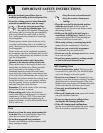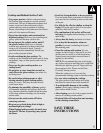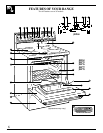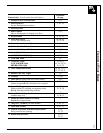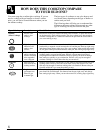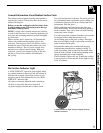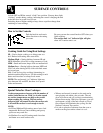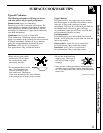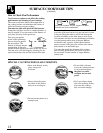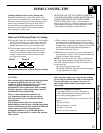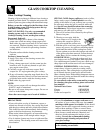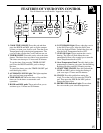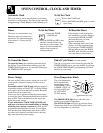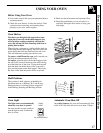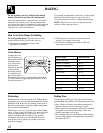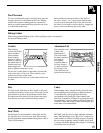
12
SURFACE COOKWARE TIPS
(continued)
How to Check Pan Performance
Use of correct cookware can affect the cooking
performance and cleaning of your cooktop.
The correct cookware reduces the temperature of
the cooktop surface and minimizes the chance of
spillovers burning onto the cooktop.
You must use pans with perfectly flat bottoms.
Some pans may have curved or rounded bottoms or
may be warped. If you are unsure of the flatness of
your pans you may do this quick test.
Turn your pan upside
down on the countertop,
place a ruler flat against
the pan surface. The
bottom of the pan and the
straight edge of the ruler
should fit flush against each other all the way across.
Turn the ruler a full 360 degrees, checking for any
space between the ruler and the bottom of the pan.
Pans with rounded, curved, ridged or warped
bottoms are not recommended.
Another simple test to determine even heat distribution
across the cookware bottom is to put one inch of water
in the pan. Bring the water to a boil and observe the
location of bubbles as the water starts to boil. Good
flat cookware will have an even distribution of bubbles
over the bottom surface area of the pan. Bubbles
localized in only a portion of the bottom indicate
uneven contact of the pan to the surface unit, uneven
heat transfer or an unsuitable pan.
Use pans that match the diameter of the surface
unit. Cooking performance will not be as good if
the cookware is either smaller or larger than the
surface unit.
SPECIAL CAUTIONS FOR GLASS COOKTOPS
• Never cook directly on the
glass. Always use
cookware.
• Always place the pan in
the center of the surface
unit you are cooking on.
• Do not use the surface as a
cutting board.
• Do not slide cookware
across the cooktop because
it can scratch the glass—
the glass is scratch
resistant, not scratch
proof.
• Don’t store heavy items
above the cooktop. If they
drop onto the cooktop,
they can cause damage.
DROPPING
DRAGGINGDRAGGING
CUTTING
OFF CENTER
SURFACE
COOKING
SURFACE
COOKING



